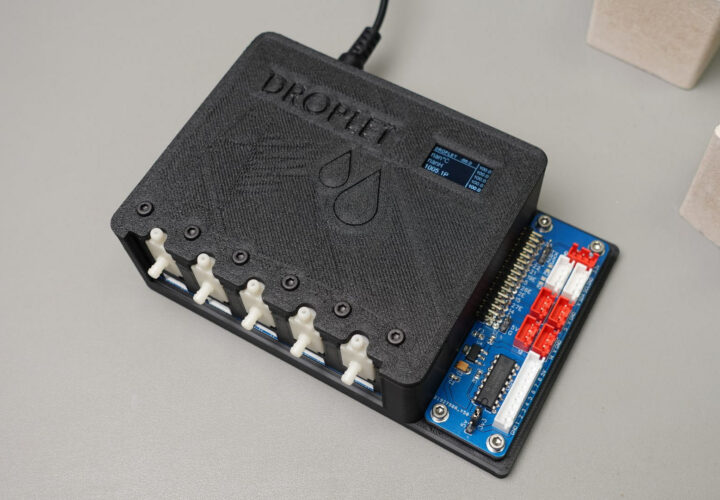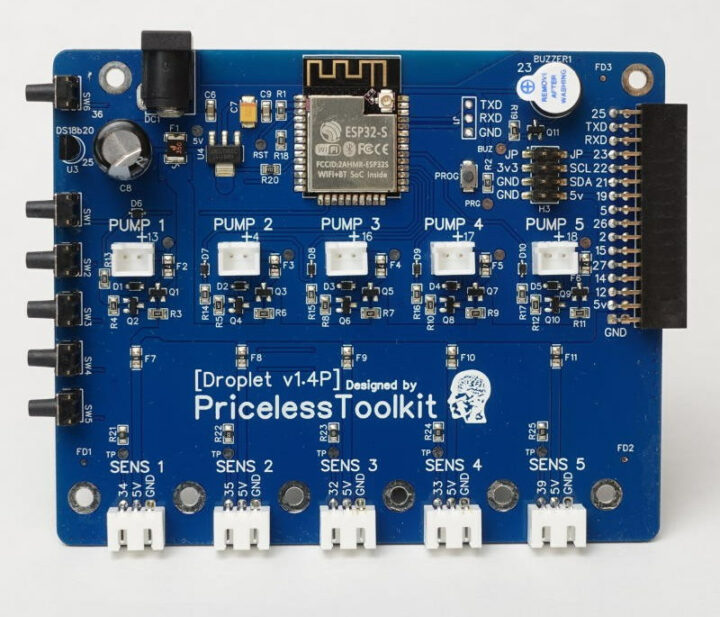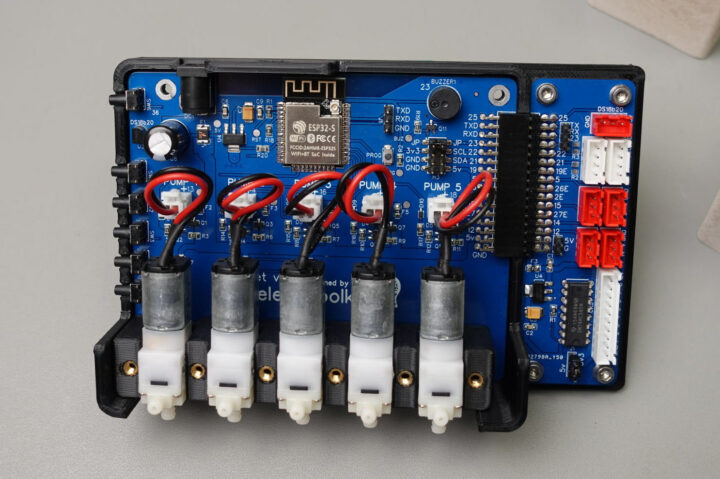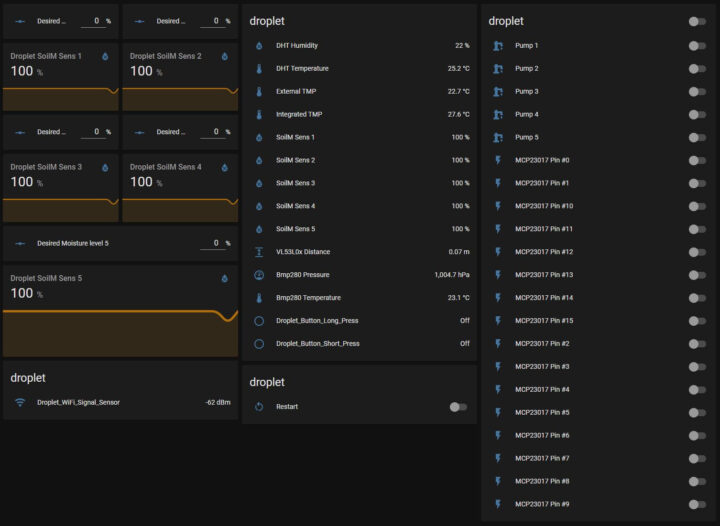When PricelessToolkit failed to find an affordable (indoor) irrigation system that works with Home Assistant and ESPHome, he built the DROPLET board based on ESP32 wireless SoC and supporting up to five micro-pumps and soil moisture sensors.
The board also comes with switches to manually control the pump, a built-in DS18B20 temperature sensor, a buzzer, and a I/O header to connect an expansion header for relay control, I2C, GPIOs, and an external DS18B20 temperature sensor.
DROPLET specifications:
- Wireless module – ESP32-S with ESP32 dual-core 32-bit microcontroller @ 240 MHz with 2.4 GHz WiFi and Bluetooth connectivity, 4MB SPI flash
- Display – I2C header for 5V/3.3V OLED display
- Pump interfaces – 5x 2-pin connectors for micropumps
- Sensors and sensor interfaces
- DS18B20 temperature sensor
- 5x 3-pin connectors for soil moisture sensors; pulled low with a 1 MΩ resistor.
- Expansion – 2x 16-pin right-angle female header with GPIOs, UART, 5V, and GND
- Debugging – UART header for programming and debugging
- Misc – Buzzer, 5x buttons for manual pump control, user button (GPIO 36).
- Power Supply – 5V DC via a power jack
The board is shown above fitted to the expander board with MCP23017 chip and five micropumps and the bottom part of the 3D printed housing. You’ll find the Gerber files, 3D files for the enclosure, the YAML configuration files for ESPHome and Home Assistant, as well as basic instructions to get started with the irrigation system on GitHub.

An example of integration with Home Assistant is shown below using a BMP280 temperature and pressure sensor, a VL53L0x ToF sensor, a DHT temperature & humidity sensor, and eight relays. The solution is said to support all sensors already supported by ESPHome.
I first discovered the board through Tindie where it is sold for $57, or $83.50 with the expansion board, but it is also available for purchase directly on PricelessToolkit’s online store. You’ll still need to purchase the micropumps (Aliexpress) and soil sensors (Aliexpress) separately.

Jean-Luc started CNX Software in 2010 as a part-time endeavor, before quitting his job as a software engineering manager, and starting to write daily news, and reviews full time later in 2011.
Support CNX Software! Donate via cryptocurrencies, become a Patron on Patreon, or purchase goods on Amazon or Aliexpress







